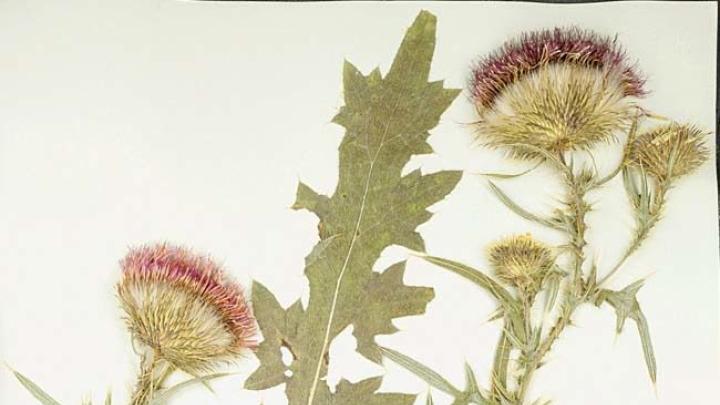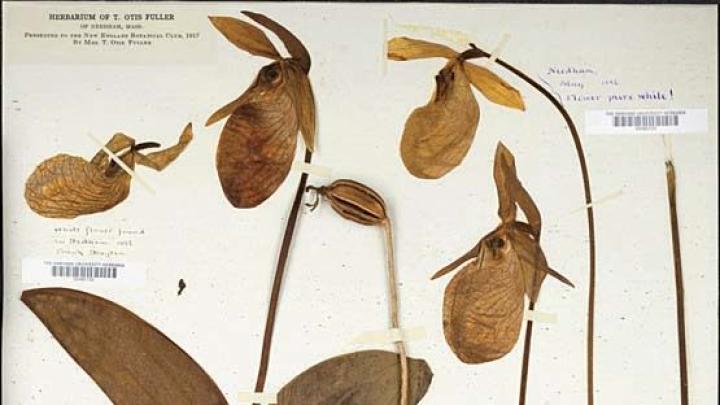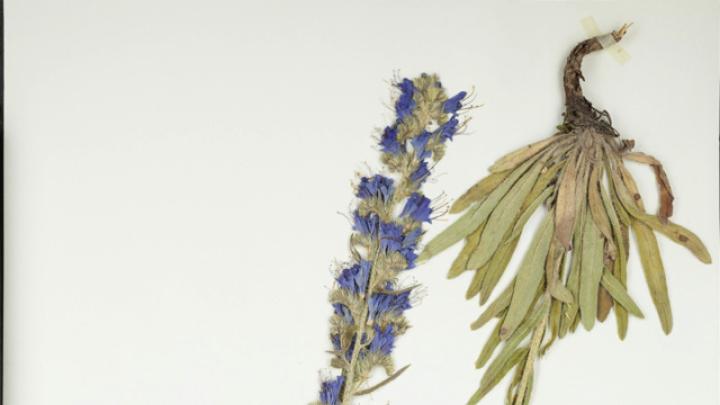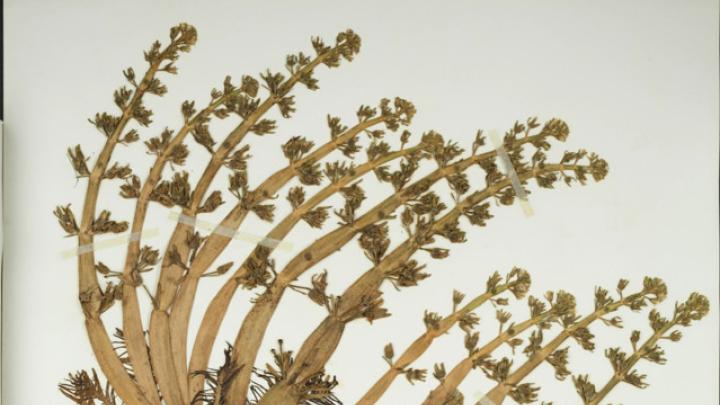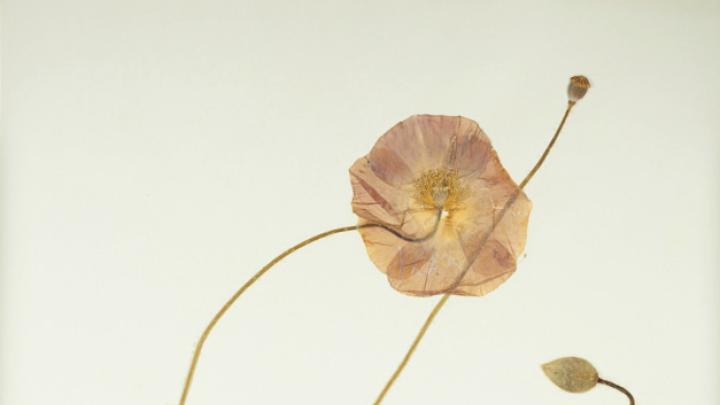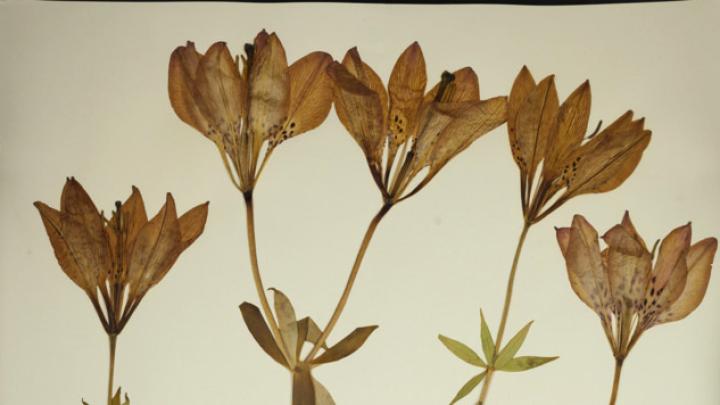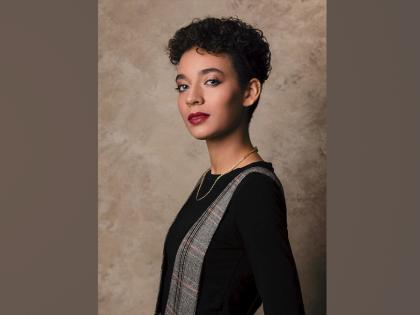Nobody knows exactly how many plant specimens there are in the Harvard University Herbaria. Five to six million is a good guess, which makes it easily the largest such university collection in the world. The numbers matter, because Herbaria director Charles Davis, professor of organismic and evolutionary biology, aspires to digitize them all. His vision is to make the miles of collections available online so he and researchers around the world can mine them for the vast and valuable data they hold. “They’ve been ‘dark,’ ” he says, “hidden in locked cabinets for generations.”
Online, they will fill important gaps in understanding how changing climate and weather patterns affect plant distribution and biology, such as flowering time, and help scientists predict which plants will be winners or losers in the future. The ranges of some species will expand and the ranges of others contract as they all shift toward higher, cooler latitudes. Some lineages of plants, he notes, may have difficulty keeping up.
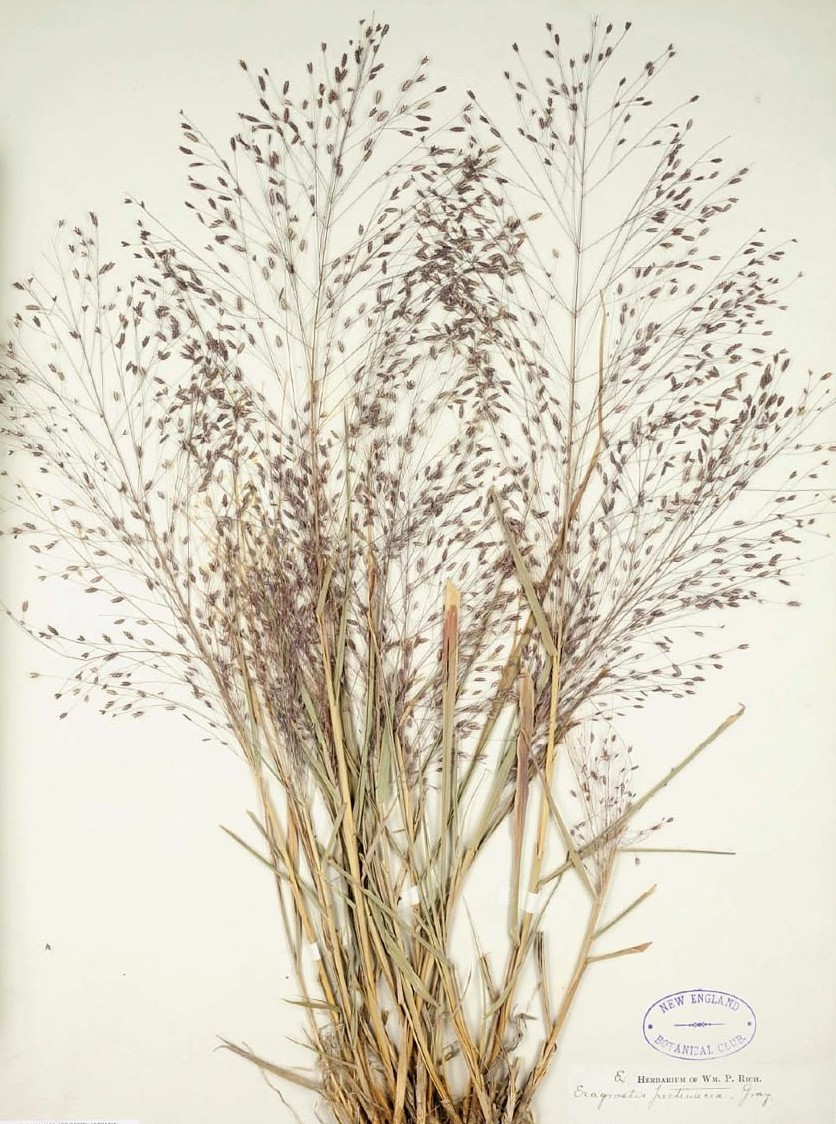
Purple lovegrass (Eragrostis spectabilis) collected in Winchester, Massachusetts, in 1888
Image courtesy of the Harvard University Herbaria
An Herbaria team just finished digitizing all 340,000 of the specimens from New England, including purple lovegrass (Eragrostis spectabilis) collected in Winchester, Massachusetts, in 1888; ladyslippers (Cypripedium aucale) gathered in Needham, Massachusetts, from 1883 to 1894; and a common thistle (Cirsium vulgare) found in an open pasture in Hillsborough, New Hampshire, in 1921. Davis characterizes the project as a “moonshot” that nevertheless was completed in less than two years with the aid of a system of conveyor belts, barcodes, and digital cameras: an assembly line for digitization that lets his team capture a specimen in 10 to 15 seconds—generating as many as 14,000 records a month.
Not all the specimens are photogenic. One collector, granddaughter to the king of Romania, liked to collect pond weeds, among other things. Henry David Thoreau’s collecting tastes were more catholic, but parochial in a regional sense: most of his specimens hail from Concord, Massachusetts. Across the collection, there are broad spatial and temporal biases, too, says Davis. “Many of the collections are concentrated around roadways and university towns,” he says. “We see a peak in efforts just prior to World War II in the 1940s, and then we see collecting declining shortly after that.” But partner institutions have picked up where Harvard left off, making digitization a compelling way to complete the record of shifting climate. What do the data so far tell him? “Thank God for Canada!”
